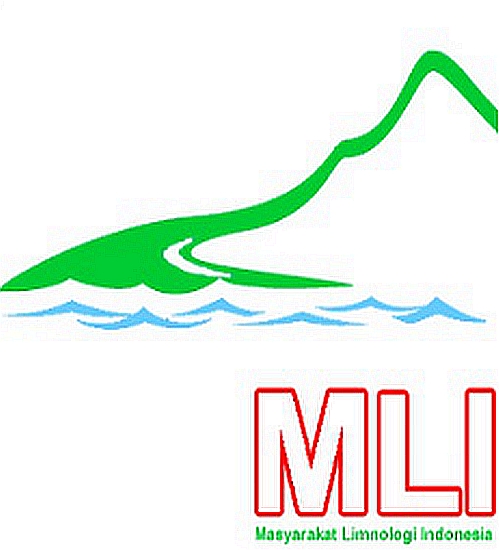Perbandingan Metodologi Koreksi Bias Data Curah Hujan CHIRPS
Abstract
Keywords
Full Text:
PDFReferences
Adler RF, Huffman GJ, Chang A, Ferraro R, Xie P, Janowiak J, Ruolf B, Schneider U, Curtis S, David B, Gruber A, Susskind J, Arkin P, Nelkin EJ. 2003. The version-2 Global Precipitation Climatology Project (GPCP) monthly precipitation analysis (1979–present). J. Hydrometeorol. 4, 1147–1167.
Beck C, Grieser J, Rudolf B. 2004. A new monthly precipitation climatology for the global land areas for the period 1951 to 2000. German Weather Service Climate Status Rep., Offenbach, Germany, pp. 181–190.
Funk C, Peterson P, Landsfeld M, Pedreros D, Verdin J, Shukla S, Husak G, Rowland J, Harrison L, Hoell A, Michaelsen J. 2015a. The climate hazards infrared precipitation with station - a new environmental record for monitoring extremes. Earth Syst. Sci. Data. 2:150066
Funk C, Peterson P, Landsfeld M, Pedreros D, Verdin J, Shukla S, Husak G, Rowland J, Harrison L, Hoell A, Michaelsen J. 2015b. Climate Hazards Group.
Hermawan, E. 2010. Pengelompokkan pola curah hujan yang terjadi di Beberapa kawasan P. Sumatera berbasis hasil analisis teknik spectral. Jurnal Meteorologi Dan Geofisika vol. 11 no. 2 – November 2010: 75 – 85.
Huffman GJ, Adler RF, Bolvin DT, Gu G, Nelkin EJ, Bowman KP, Hong Y, Stocker EF, Wolff DB. 2007. The TRMM multi-satellite precipitation analysis: quasi-global, multi-year, combined-sensor precipitation estimates at fine scale. J. Hydrometeorol. 8, 38–55.
Jadmiko SD. 2016. Risiko kebakaran hutan dan lahan berdasarkan kajian proyeksi iklim di Kalimantan Barat. Tesis. Sekolah Pascasarjana.Institut Pertanian Bogor.
Katsanos D, Retalis A, Michaelies S. 2015. Validation of high-resolution precipitation database (CHIRPS) over Cyprus for a 30-year period. Atmos. Res (2015).
Lenderink G, Buishand A dan Deusen WV. 2007. Estimate of future discharges of the river Rhine using two scenarios methodologies: direct versus delta approach. Hydrol. Earth Syst. Sci. 11 (3). 1145-1159.
New M, Hulme M, Jones P. 1999. Representing twentieth century spacetime climate variability. Part I: Development of a 1961–90 mean monthly terrestrial climatology. J. Climate 12, 829–856.
New M, Hulme M, Jones P. 2000. Representing twentieth century spacetime climate variability. Part II: Development of 1901–96 monthly grids of terrestrial surface climate. J. Climate 13, 2217–2238.
Ninyerola M, Pons X, Roure JM. 2000. A methodological approach of climatological modelling of air temperature and precipitation through GIS techniques. Int. J. Climatol. 20: 1823–1841.
Piani C, Haerter JO, Coppola E. 2009. Statistical bias correction for daily precipitation in regional climate models over Europe. Theor Appl Climatol. 99: 187–192.
Shrestha NK, Qamer FM, Pedreros D, Murthy MSR, Wahid SM, Shrestha M. 2017. Evaluating the accuracy of Climate Hazard Group (CHG) satellite rainfall estimates for precipitation based drought monitoring in Koshi basin, Nepal
Su F, Hong Y, Lettenmaier DP. (2008). Evaluation of Multi-satellite Precpitation Analysis (TMPA) and Its Utility in Hydrologic Prediction in the La Plata Basin. Journal of Hydrometeorology, 9, 622-640.
Tapiador JT, Turk FJ, Petersen W, Hou AY, GarcÃa-Ortega E, Machado LAT, Angelis CF, Salio P, Kidd C, Huffman GJ, Castro MD. 2012. Global precipitation measurement: methods, dataset and application. Atmos.Res. 104-105, 70-97.
Tapiador JT, Navarro A, Levizzani V, Garcia-Ortega E, Huffman GJ, Kidd C, Kucera PA, Kummerow CD, Masunaga H, Petersen WA, Roca R, Sanchez JL, Tao WK, Turk FJ. 2017. Global precipitation measurements for validating climate models. Atmos.Res. 197, 1-20.
Trejo FJP, Barbosa HA, Penaloza-Murillo MA, Moreno MA, Farias A. 2016. Intercomparison of improved satellite rainfall estimation with CHIRPS gridded product and rain gauge data over Venezuela.
Trejo FJP, Barbosa HA, Kumar TVL. 2017. Validating CHIRPS-based satellite precipitation estimates in Northeast Brazil. Arid.Env. 139, 26-40.
DOI: http://dx.doi.org/10.14203/limnotek.v25i1.224
Refbacks
- There are currently no refbacks.
PUBLISHED IN COLLABORATION WITH

Copyright © 2015-2018, LIMNOTEK. All Rights Reserved. Powered by OJS.





